Can we develop, design and manufacture plastics that positively contribute to Net Zero?
Published: 17 March 2022
Reusing and repairing single use and other plastics contributes to Net Zero by both reducing the manufacture of new products and the number of items that end up in waste disposal. However, the reuse and repair of plastics as part of the circular economy is not without challenge.
By Professor Jude Robinson (Institute of Health & Wellbeing Social Sciences)
Reusing and repairing single use and other plastics contributes to Net Zero by both reducing the manufacture of new products and the number of items that end up in waste disposal. However, the reuse and repair of plastics as part of the circular economy is not without challenge.
As part of the Everyday Clean/ Usafi Kila Siku project, researching everyday health and hygiene in resource limited settings in Kenya, we became interested in the (re-)use of plastic containers for water transportation and storage. As households need water for washing clothes and bodies, cleaning homes and shared latrine areas, and for drinking and cooking, the average consumption for carried water is 38 litres of water per person each day. Lightweight and durable, with carry handles, designed to stack and store, plastic containers are essential for the transportation and storage of water for many households in resource-limited settings.
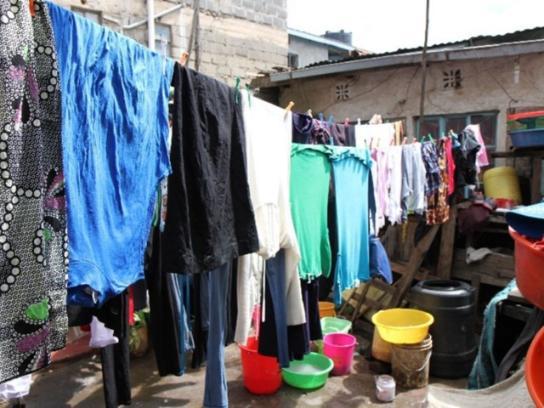
Water transportation and sale is gendered: male water sellers often travel long distances to source water, carrying as many containers as possible using their hand or donkey drawn carts, that they then sell to households. To save the cost of buying from the water sellers, many women and children carry plastic containers to commercial water stations, standpipes or rivers and then carry the full containers back to their homes.
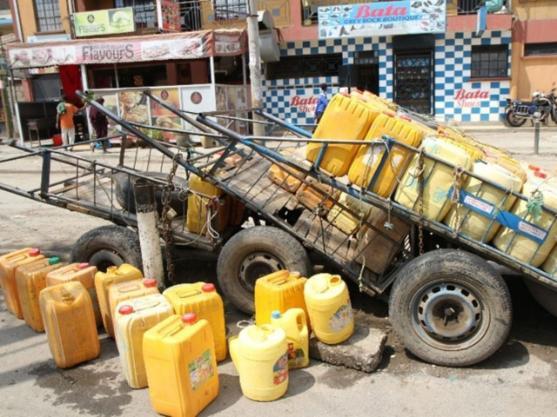
As the containers are reused many times, and only discarded if they become cracked and unusable they appear to be a Net Zero success, but there are some major concerns around safety. Few containers were originally designed for water carriage and storage and others were used to transport other substances not intended for human consumption, including petrol or detergents. Plastics vary in their chemical composition, which influences the durability and suitability for water storage. Single use plastics designed to carry chemicals and even those designed to contain food products may leach toxins, and this increases as plastics degrade over time.
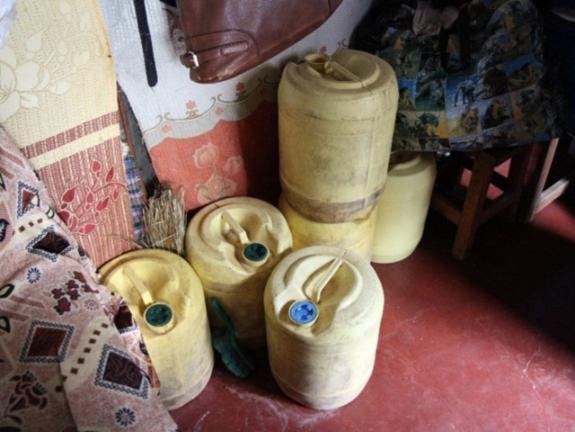
Plastics also respond to heat and light, and this can accelerate the leaching of toxins, and negatively affect the storage of water and other liquids. Original labels are usually no longer evident, and even industry marks embossed onto the base of containers may become eroded and unreadable over time. As these marks are designed to be read by industry specialists rather than publics, there is currently no easy way for people to assess the most suitable containers to repurpose for water storage. Intended for single use, many containers were not designed to be cleaned and have hollowed handles and odd angles that harbour dirt, which is a threat to human health. Once the containers are cracked, they are impossible to repair and are discarded to the detriment of local environments.
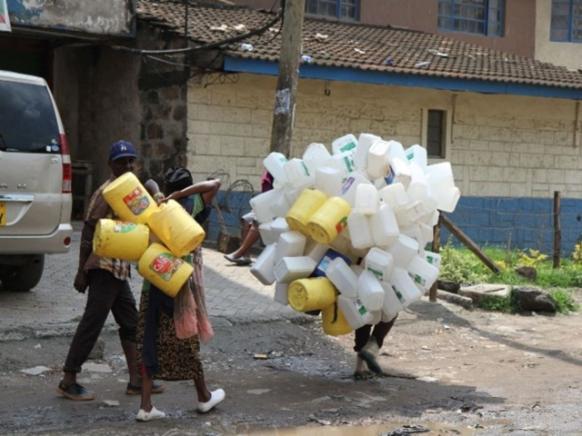
Manufacturing plastic containers that can be reused in unexpected ways is the next challenge for material science and industry. This reimagining extends conventional ideas of reuse, to the more radical idea of creative and compassionate repurposing - for industry to produce materials and use technologies that not only provide commercial advantage for the manufacturer but explicitly consider the potential for their product to mitigate global inequalities in terms of human, animal and environmental health. These new plastics need to be lightweight and durable, safe to use in different environments, suitable to store a variety of substances, easily repairable to prolong their use over time, and easily and cost-effectively recyclable at the end of their useful life. The product designers also need to consider the repurposing of their products to create forms that can be stacked, carried, stored and cleaned without specialist equipment. The benefits of these innovations in material science and product development may go unnoticed by people living in resource rich settings but would represent a major contribution to Net Zero and as importantly, a contribution to the health and wellbeing of people living in resource limited settings and to their environment.
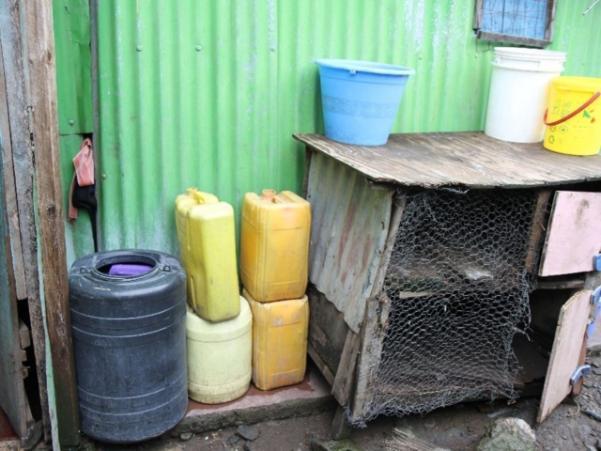
During May and June, I am convening two half-day workshops to explore the circular economy of plastics:
(i) plastic materials, use and recycling in resource-limited settings;
(ii) ethical consumption and regulation for plastics in resource-limited settings.
If you are interested in this area and would like to take part in one (or both) of the workshops, please get in touch with me - Jude.Robinson@Glasgow.ac.uk.
First published: 17 March 2022

